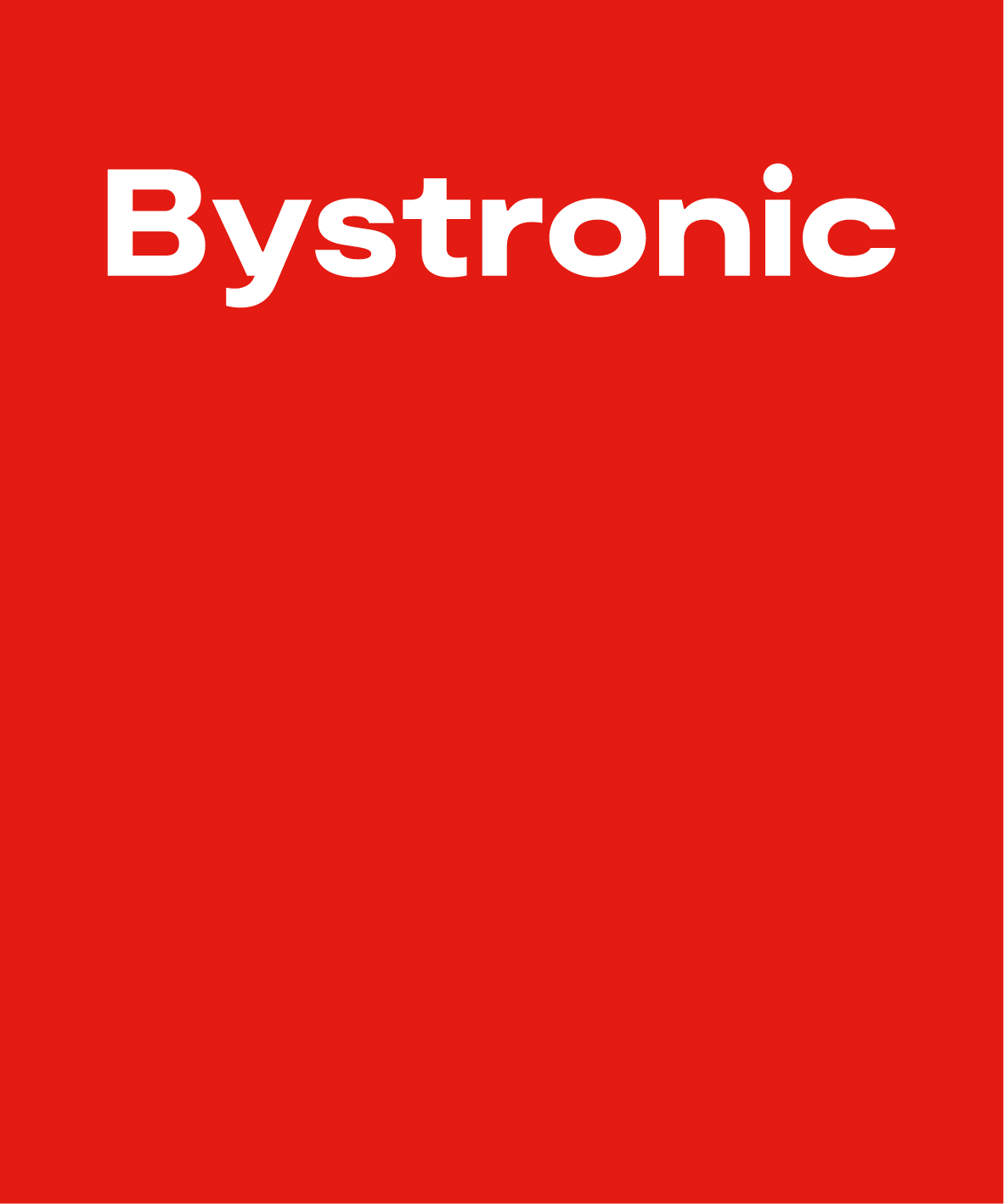1 Performance
1.1 Segment information: order intake/net sales
Order intake1
Order intake is an important performance indicator. An order is recognized when a sales contract is signed, an initial down payment received and the customerʼs product orders placed at the production plants.
|
CHF million |
2024 |
|
2023 |
|
|
|
|
|
|
|
|
EMEA |
298.5 |
|
368.5 |
|
|
Americas |
222.3 |
|
290.3 |
|
|
China |
56.9 |
|
65.4 |
|
|
APAC |
47.6 |
|
69.8 |
|
|
Order intake |
625.4 |
|
794.0 |
|
|
|
|
|
|
|
1 The order intake was not subject to the audit.
Net sales
|
CHF million January – December 2024 |
Net sales third parties |
|
Net sales interregion |
|
Total net sales |
|
|
|
|
|
|
|
|
|
|
EMEA |
290.7 |
|
126.1 |
|
416.8 |
|
|
Americas |
255.5 |
|
3.6 |
|
259.1 |
|
|
China |
55.7 |
|
30.8 |
|
86.4 |
|
|
APAC |
46.4 |
|
3.0 |
|
49.4 |
|
|
Eliminations |
|
|
–163.4 |
|
–163.4 |
|
|
Net sales |
648.3 |
|
|
|
648.3 |
|
|
|
|
|
|
|
|
|
|
CHF million January – December 2023 |
Net sales third parties |
|
Net sales interregion |
|
Total net sales |
|
|
|
|
|
|
|
|
|
|
EMEA |
453.3 |
|
181.8 |
|
635.1 |
|
|
Americas |
335.1 |
|
3.6 |
|
338.7 |
|
|
China |
63.5 |
|
41.9 |
|
105.4 |
|
|
APAC |
78.2 |
|
3.8 |
|
82.0 |
|
|
Eliminations |
|
|
–231.1 |
|
–231.1 |
|
|
Net sales |
930.1 |
|
|
|
930.1 |
|
|
|
|
|
|
|
|
|
The internal reporting will be adjusted in 2025 to the new divisional segmentation Systems and Service. The segmentation by regions will remain in place for the reporting year.
With reference to the recommendation for listed companies (FER 31/8), Bystronic refrains from disclosing segment results in the interest of the shareholders for the following reasons:
- Impairment of negotiating positions:
The disclosure of segment results would allow conclusions to be drawn about pricing, which could significantly affect Bystronicʼs negotiating position. - Competitive disadvantage compared to competitors:
Bystronicʼs competitors do not disclose segment information and detailed segment results. Thus, the disclosure of segment results would put Bystronic at a competitive disadvantage compared to its competitors as the results allow conclusions to be drawn about the margin and cost situation per segment.
Accounting principles
External segment reporting is based on the internal reporting used by the Executive Committee and the Board of Directors for corporate management purposes. There are four regional segments at Bystronic: EMEA, Americas, China and APAC.
Machine sales are recognized when the risks and rewards of ownership have been transferred to the buyer. Hence, revenue is recognized upon completion of the installation and when the machine is ready for operation. This is generally recorded in an acceptance protocol. The revenue is recognized separately for transactions with separable components. Services rendered are recognized as revenue based on their stage of completion if this can be reliably estimated. Net sales correspond to the expected value of the services provided, net of sales and value-added taxes, sales deductions such as sales bonuses, rebates and discounts granted as well as value adjustments and currency effects on trade receivables.
1.2 Backlog1
The backlog at the end of the period equals the backlog at the end of the previous period, adjusted for foreign currency effects, plus the order intake of the reporting period minus net sales of the reporting period.
|
CHF million |
12/31/2024 |
|
12/31/2023 |
|
|
|
|
|
|
|
|
Backlog |
239.2 |
|
252.9 |
|
|
|
|
|
|
|
1 The backlog was not subject to the audit.
1.3 Restructuring and impairments
On September 11, 2024, Bystronic decided on a comprehensive reorganization and restructuring to position itself closer to customers and reduce the cost base. As part of this restructuring, the regional organizational structure was replaced by a divisional structure, reducing the Executive Board to four members. Additionally, further comprehensive restructuring measures are being introduced to leverage synergies. This includes the consolidation of Group functions and the global operational structures. The previous production of automation solutions in Italy will be closed, while automation products will continue to be produced in Switzerland and China. For optimization purposes, Bystronic will relocate the production site in China from Shenzhen to Foshan. Overall, more than 600 positions will be cut worldwide.
The costs associated with the restructuring measures amount to CHF 36.6 million.
|
CHF million |
2024 |
|
|
|
|
|
|
Restructuring costs |
–22.6 |
|
|
Impairment losses on assets |
–14.0 |
|
|
Restructuring costs and impairment |
–36.6 |
|
|
|
|
|
The restructuring expenses include personnel-related costs amounting to CHF 17.3 million, which primarily cover severance payments in EMEA and China, as well as CHF 5.2 million in other operating expenses, mainly due to the closure of the production for automation solutions in Italy. The impairments amounting to CHF 14.0 million include additional depreciation and amortization on fixed assets, intangible assets, and inventories, which are directly related to the restructuring measures.
The table below shows Bystronicʼs EBIT before and after restructuring costs and impairment.
|
CHF million |
2024 |
|
2023 |
|
|
|
|
|
|
|
|
Operating result (EBIT) adjusted |
–47.4 |
|
54.4 |
|
|
Restructuring costs and impairment |
–36.6 |
|
- |
|
|
Operating result (EBIT) |
–84.0 |
|
54.4 |
|
|
|
|
|
|
|
1.4 Other operating income
Other operating income includes proceeds from the sale of obsolete materials and income from subsidies and insurance payments. Income-related government grants amounted to CHF 0.5 million (previous year: CHF 1.0 million).
1.5 Operating expenses
Material expenses
Material expenses include all expenses for raw, auxiliary and operating materials, as well as expenses for the external manufacture, processing or treatment of own products (external services).
Compared to the decrease in net sales of 30.3%, material expenses also dropped by 30.3%, taking into account the changes in inventories of unfinished and finished goods. The ratio of the adjusted material expenses to net sales (materials ratio) amounted to 43.6%, 0.1 percentage points higher than in the previous year. In particular, the higher share of revenue from the service business led to a lower material ratio. This effect was offset by impairments, so the material ratio remained the same as the previous year. As part of the restructuring, impairments of inventories amounting to CHF 7.9 million were made, which are reflected in the material expenses. Further explanations are provided under note 1.3 restructuring and impairments.
Personnel expenses
|
CHF million |
2024 |
|
2023 |
|
|
|
|
|
|
|
|
Wages and salaries |
183.4 |
|
202.2 |
|
|
Social security benefits |
41.4 |
|
43.5 |
|
|
Other personnel expenses |
6.1 |
|
6.2 |
|
|
Total personnel expenses adjusted |
230.9 |
|
251.9 |
|
|
Personnel-related restructuring costs |
17.3 |
|
|
|
|
Total personnel expenses |
248.3 |
|
251.9 |
|
|
Average number of full-time equivalents |
3,268 |
|
3,573 |
|
|
|
|
|
|
|
Bystronicʼs personnel expenses decreased by 1.4% compared to the previous year. Due to personnel-related restructuring costs, personnel expenses in relation to sales increased by 11.2 percentage points to 38.3%.
Some Bystronic companies received short-time working compensation or similar personnel-related state subsidies. These were credited to personnel expenses and amounted to CHF 2.3 million (previous year: CHF 0.3 million). The cash flow amounted to CHF 0.7 million (previous year: CHF 0.1 million). In the reporting year, there were 34.6 average full-time equivalents on short-time work (previous year: 4.5 average full-time equivalents).
The personnel-related restructuring costs primarily include severance payments related to the restructuring.
The average number of employees sank by 8.5% to 3,268 full-time equivalents. The decrease in all areas resulted from the economic downturn and the initiated restructuring measures.
Other operating expenses
|
CHF million |
2024 |
|
2023 |
|
|
|
|
|
|
|
|
Direct costs of sold products |
63.5 |
|
81.5 |
|
|
Purchased services 1 |
45.5 |
|
49.2 |
|
|
Maintenance, rent, leasing and energy |
28.1 |
|
30.2 |
|
|
Sales, marketing and administration |
26.1 |
|
28.5 |
|
|
Sundry operating expenses |
17.9 |
|
13.6 |
|
|
Total other operating expenses |
181.1 |
|
203.1 |
|
|
|
|
|
|
|
1 Purchased services include consulting and audit, IT, research and development and insurances, among others.
Compared to the previous year, Bystronicʼs other operating expenses decreased by 10.8%. Bystronic was able to reduce costs in all categories, except for sundry operating expenses, which included one-time costs of CHF 5.2 million due to restructuring measures in the reporting year.
In relation to net sales, other operating expenses increased by 6.1 percentage points to 27.9%
1.6 Income taxes
|
CHF million |
2024 |
|
2023 |
|
|
|
|
|
|
|
|
Current income taxes |
10.8 |
|
14.8 |
|
|
Deferred taxes |
–26.1 |
|
–1.7 |
|
|
Total income taxes |
–15.3 |
|
13.1 |
|
|
|
|
|
|
|
Current income taxes include taxes paid and still owed on the taxable income of the individual companies.
|
|
Tax rate 2024 |
|
Income taxes 2024 |
|
Tax rate 2023 |
|
Income taxes 2023 |
|
|
|
|
|
|
|
|
|
|
|
|
Average applicable tax rate and income taxes |
22.4% |
|
–18.6 |
|
22.2% |
|
12.2 |
|
|
Effect of non-recognition of tax losses in current year |
–10.3% |
|
8.5 |
|
2.8% |
|
1.6 |
|
|
Use of unrecognized tax loss carryforwards |
0.1% |
|
–0.1 |
|
–0.2% |
|
–0.1 |
|
|
Reassessment of tax loss carryforwards |
–3.2% |
|
2.6 |
|
0.8% |
|
0.5 |
|
|
Other influences |
9.4% |
|
–7.8 |
|
–1.9% |
|
–1.1 |
|
|
Effective tax rate and income taxes |
18.4% |
|
–15.3 |
|
23.8% |
|
13.1 |
|
|
|
|
|
|
|
|
|
|
|
The expected tax rate for Bystronic of 22.4% (previous year: 22.2%) corresponds to the weighted average of tax rates in the respective tax jurisdictions. The effective tax rate is 18.4% (previous year: 23.8%) on ordinary income before taxes. The decrease from the average applicable and expected tax rate to the effective tax rate in the reporting year is mainly due to the non-recognition of tax losses in the current year as well as the reassessment of tax loss carryforwards.
Bystronic calculates deferred taxes at the tax rates actually expected to apply to the temporary differences in the individual companies. These are weighted on average at 16.6% (previous year: 19.8%). Deferred tax assets from loss carryforwards amounted to CHF 12.7 million (previous year: CHF 4.0 million). Under “Other Influences”, there is an effect in the reporting year from the lower applied tax rate compared to the statutory tax rate on activated loss carryforwards, which has an impact of 7.3% on the effective tax rate or CHF –6.0 million on income taxes.
Loss carryforwards of CHF 90.0 million (previous year: CHF 28.6 million) were not capitalized. The tax effect is estimated at CHF 18.7 million (previous year: CHF 6.2 million)
Significant estimates made by management
Significant estimates have to be made to determine the amount of current and deferred income tax assets and liabilities. Some of these estimates are based on the interpretation of existing tax legislation and regulations. Various internal and external factors may have favorable or unfavorable effects on income tax assets and liabilities. These factors include, but are not limited to, changes in tax legislation and regulations and their interpretation, changes in tax rates and in the overall level of current and expected future earnings before taxes. Such changes may impact the current and deferred income tax assets and liabilities recognized in future reporting periods.
Accounting principles
Income taxes include current and deferred income taxes. All tax liabilities are accrued, irrespective of their maturity. The expected taxes on the valuation differences between the Groupʼs carrying amounts and the tax bases are accrued at the expected income tax rates for the companies. The change in these deferred taxes is recognized through tax expenses. The deferred tax assets from offsetting loss carryforwards and temporary valuation differences are only capitalized if it is highly probable that future taxes on profits can be offset.
Bystronic is within the scope of the OECD minimum taxation. The global minimum tax regulations stipulate that an additional tax for the difference between the effective GloBE (Global Anti Base Erosion) tax rate per country and the minimum tax rate of 15% must be paid. In Switzerland and most other countries in which Bystronic operates, the laws introducing global minimum taxation came into force on January 1, 2024. Bystronic has made an assessment of the global minimum taxation based on the applicable tax laws, the effective tax rates per country and information on the Group companies. Based on the assessment, Bystronic meets the requirements for the application of the Transitional CbCR Safe Harbor Rules in 2024 in each country concerned. Bystronic therefore does not expect to pay any additional income taxes under global minimum taxation. Bystronic continues to monitor the development of the minimum tax provisions and assesses their impact on the Group on an ongoing basis. Furthermore, Bystronic applies the exemption to the recognition and disclosure of information about deferred income tax assets and liabilities in connection with the income taxes of the minimum tax.
1.7 Earnings per share
|
CHF |
2024 |
|
2023 |
|
|
|
|
|
|
|
|
Net result attributable to shareholders of Bystronic AG |
–67,554,000 |
|
41,947,000 |
|
|
Average number of class A registered shares (nominal value: CHF 2.00) |
1,824,862 |
|
1,825,567 |
|
|
Average number of class B registered shares (nominal value: CHF 0.40) |
1,215,000 |
|
1,215,000 |
|
|
Earnings per class A registered share in CHF (diluted/basic) |
–32.67 |
|
20.28 |
|
|
Earnings per class B registered share in CHF (diluted/basic) |
–6.53 |
|
4.06 |
|
|
|
|
|
|
|
Share-based payments do not lead to a dilution of earnings per share.
Accounting principles
Earnings per share category were calculated on the basis of the portion of net income attributable to the shareholders of Bystronic AG, based on their portion of the share capital and the average number of outstanding shares (issued shares less treasury shares).


